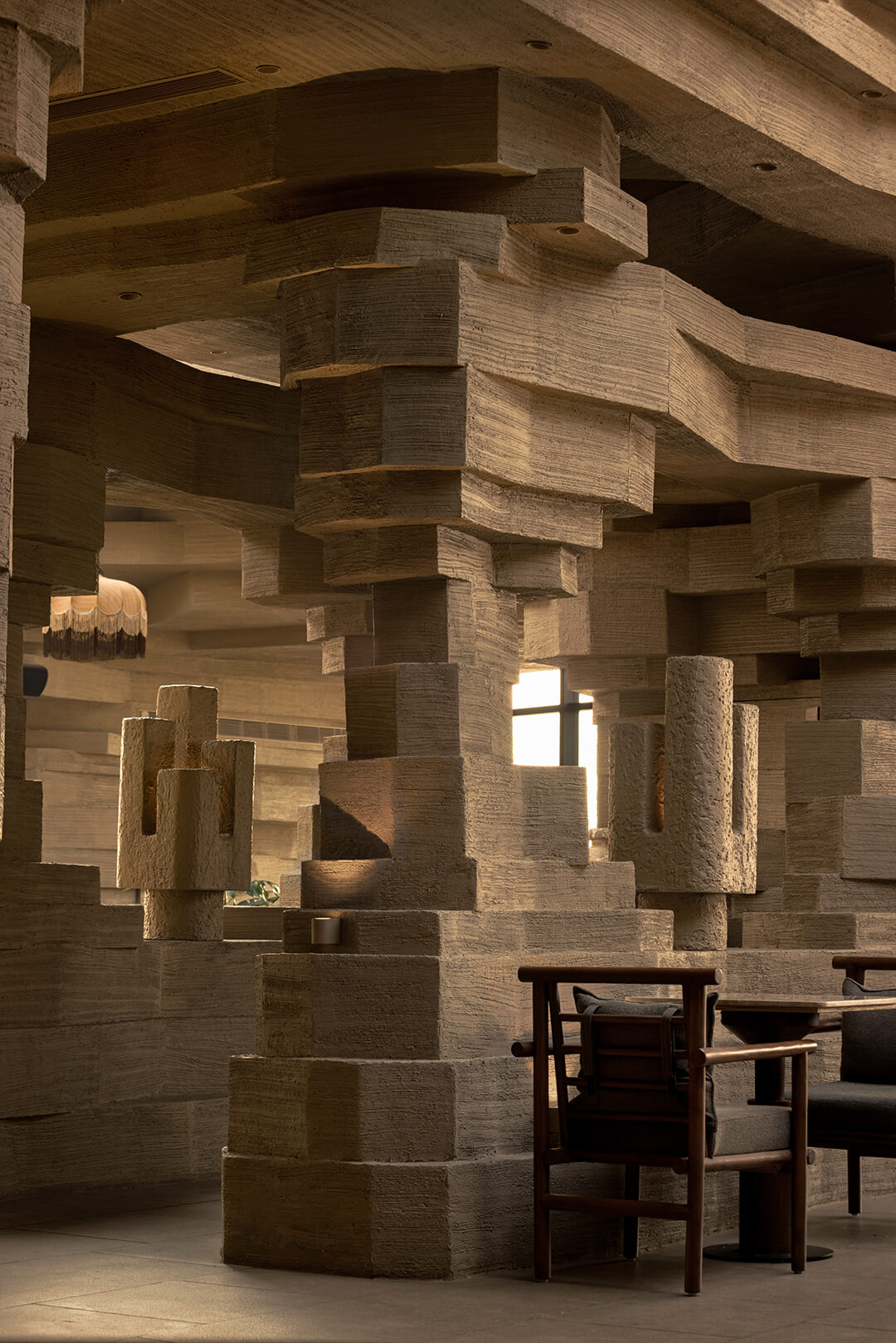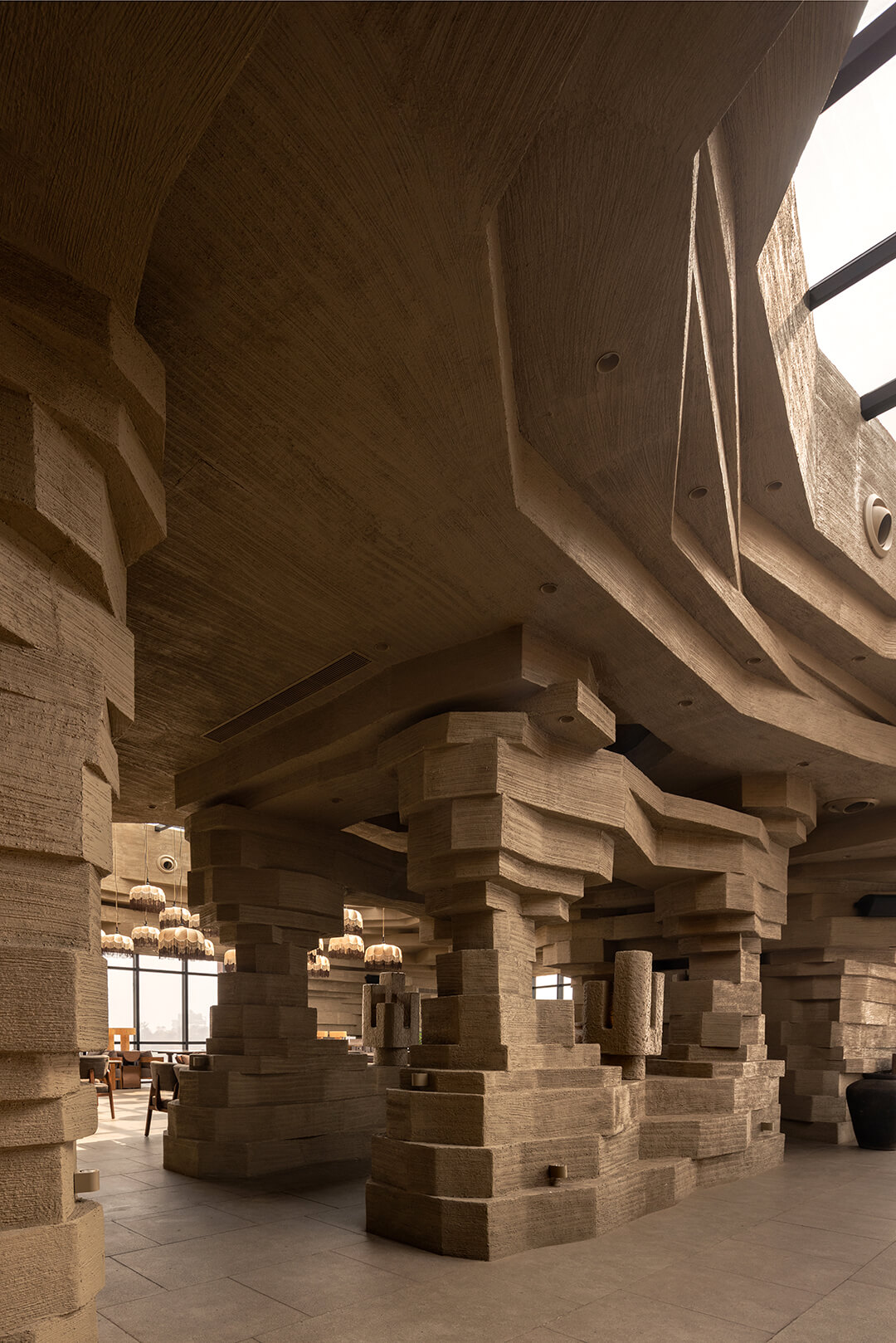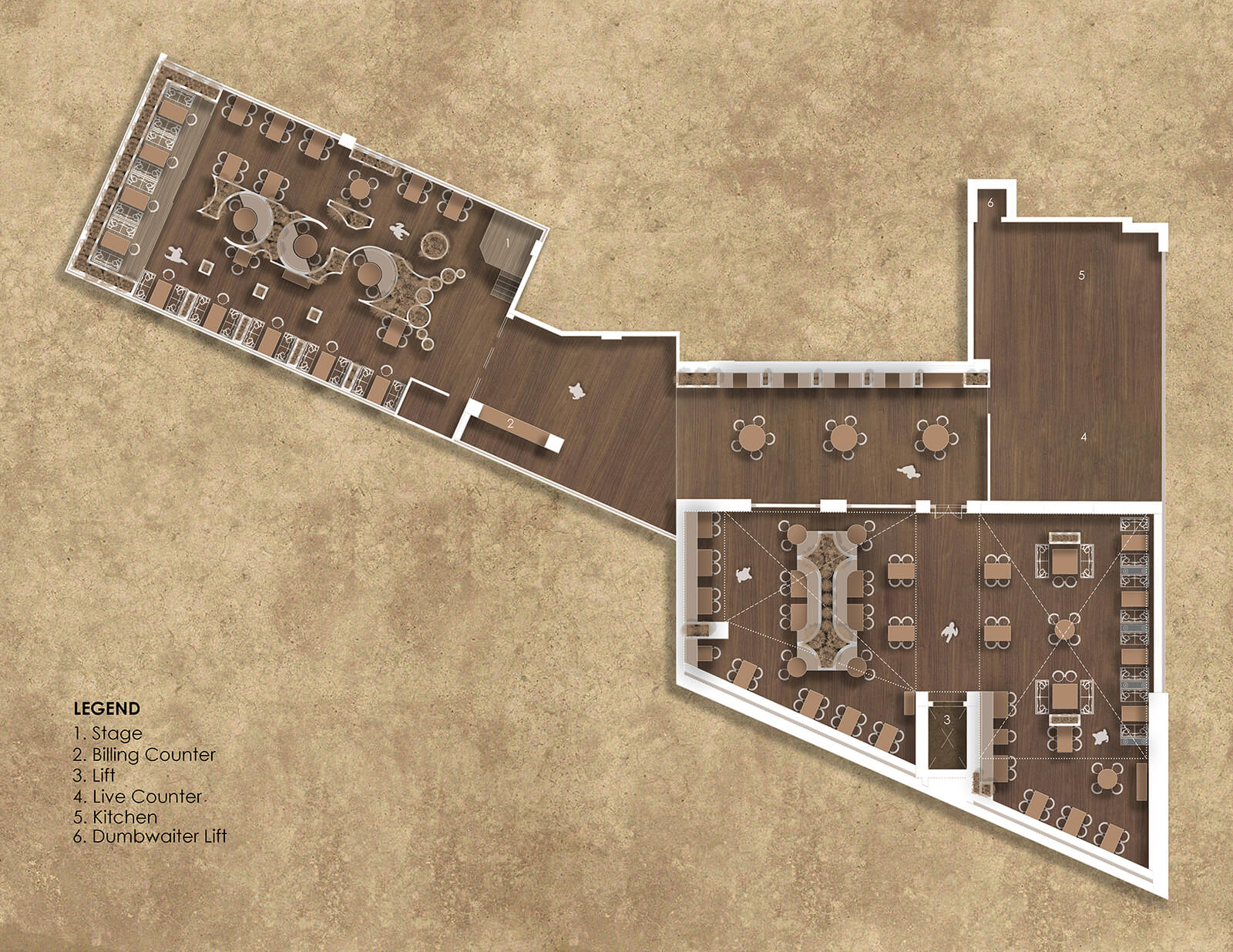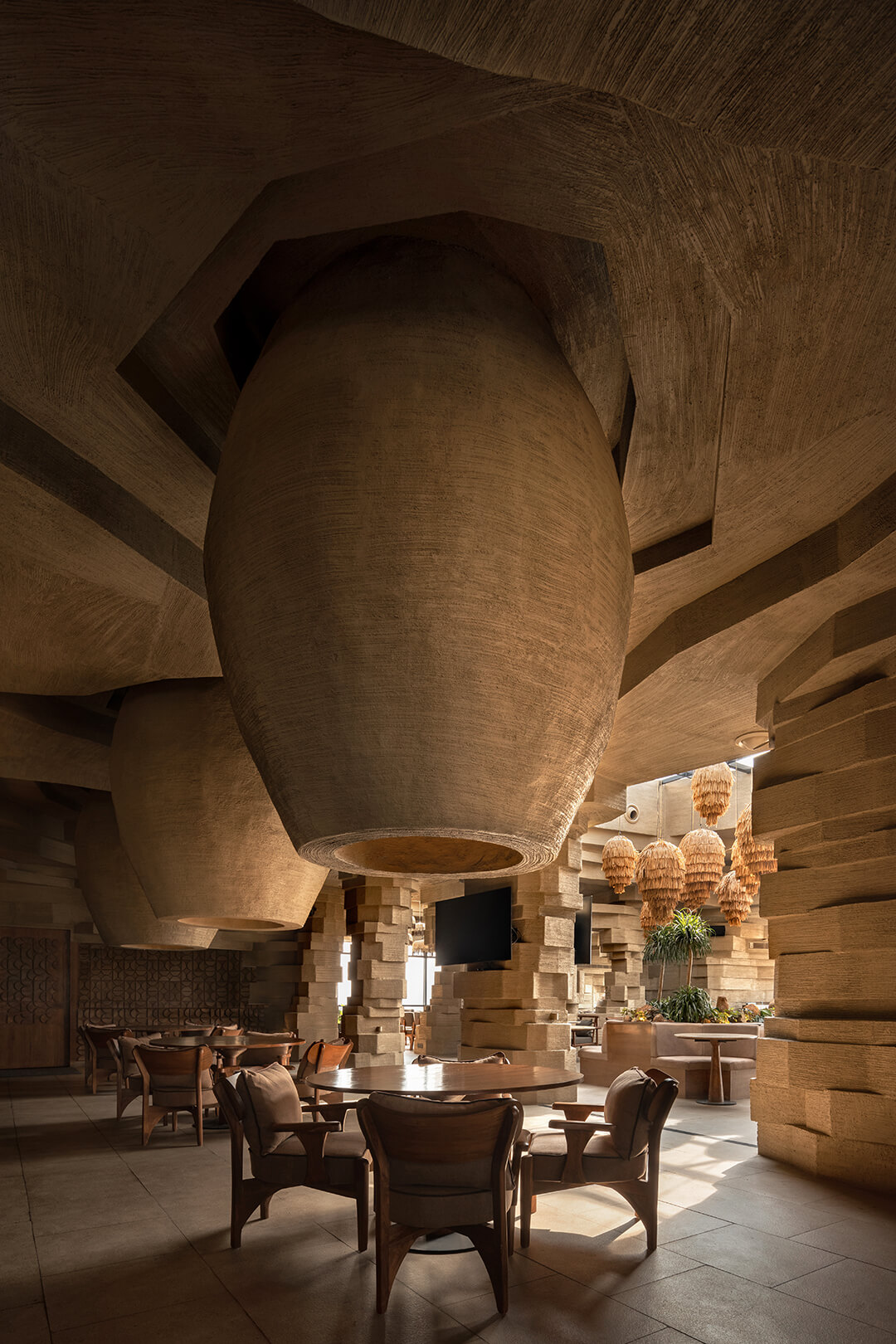M:OFA creates the idiosyncratic interiors of Cafe Delhi Heights as a 'satirical movie set'
by Akash SinghDec 11, 2024
•make your fridays matter with a well-read weekend
by Dhwani ShanghviPublished on : Jun 16, 2025
In The Language of Post-Modern Architecture (1977), architectural theorist and historian Charles Jencks introduced the concept of double coding as part of a broader critique of modernist architecture and its underlying communicative assumptions. According to Jencks, modernism operated on a theory of communication that prioritised clarity, singularity and universality, often at the expense of cultural nuance and symbolic richness. It spoke in what he saw as a monologic voice, addressing an idealised, rational viewer fluent in the esoteric codes of modernist form. Ornament, metaphor and historical reference were dismissed as unnecessary or dishonest, leaving architecture stripped of layered meaning. Jencks described double coding as a communicative strategy through which post-modern architecture could speak simultaneously to a knowledgeable minority, including architects, theorists and critics and a broader public audience. By drawing on symbolism, metaphor, historical reference and irony, postmodernism employed double coding as a way to engage different audiences and operate across multiple interpretive registers at once. For Jencks, this move was not merely stylistic, but ideological: a way to re-enchant architecture as a medium of cultural expression and public meaning-making.

Mocha Pune, a restaurant designed by Loop Design Studio, draws visual and formal cues from Khazad-dûm, the legendary subterranean realm in J.R.R. Tolkien’s The Lord of the Rings. Moria is both a place of grandeur and of quiet reverence, defined as much by shadow and stillness as by calibrated light. Imagined as a vast, awe-inspiring world carved deep into the mountain—with “immeasurable halls, filled with an everlasting echo” and “huge columns like trees of stone”, its architecture is inseparable from the geology that shapes it. Yet, despite its subterranean setting, it is not entirely without light; as Tolkien writes, “There is a chamber… built of marbles white and green and red, where the light of the sun fell through shafts in the roof.”

Set atop the 15th-floor terrace of a commercial building in Wanowrie, Maharashtra, India, Mocha Pune occupies a 9,000 sq.ft. site that is divided into two primary zones: a partially enclosed dining area with large skylights and glazed double-height walls; and an adjacent open-to-sky terrace bordered by low glass parapets. Elevated above the surrounding cityscape, the restaurant affords expansive, uninterrupted views of the Pune skyline.

The 20-foot-high interior volume is structured around a measured tension between compression and expansion. Horizontality is articulated through layered wall planes and slatted column surfaces, constructed in a staggered, sediment-like arrangement that runs across the length of the space. This continuous lateral emphasis is offset by the ceiling, where barrel-shaped forms and recessed ceiling surfaces press downward, modulating the height and introducing a sense of vertical weight. In narrower corridors, the linear articulation of the horizontal walls is accentuated by generous vertical openings, reinforcing a sense of continuity and direction. In contrast, the central hall features an overhead mass that modulates the scale, lending a sense of containment to the otherwise expansive height. The result is a spatial rhythm that moves between compression and release, openness and enclosure.
While the spatial rhythm is defined by a measured duality of compression and expansion, the formal language of the interior design introduces a second layer of contrast—between the geometric and the organic. The curved, vessel-like volumes suspended from the ceiling evoke something primal and hand-hewn, suggesting weight and softness at once, while the angular, stratified planes of the wall, column and ceiling planes speak of precision and restraint. This tension lends the hospitality architecture a charged ambiguity—at once excavated and constructed, ancient and contemporary.

The light in the space draws from the language of excavated architecture—skylights introduce a quiet, diffused luminosity that accentuates surface texture and shadow. The muted glow is subverted by the full-height glass curtain walls, framed in a mullioned metal grid, which open expansive views and introduce ample unfiltered natural light along the edge of the restaurant. This tension between the cavernous depths and the glazed clarity extends into the construction logic. Although the hospitality design references the solidity of carved stone, the surfaces are constructed using a hollow MS framework clad in commercial plywood, finished with putty and metal-brushed to mimic sedimented layers. The result is a monolithic effect achieved not through material weight, but through crafted surface illusion.
In this sense, Mocha Pune constructs meaning through a dialogue between historical reference and contemporary expression, drawing significance both from what it recalls and how it exists in the present. This interpretive openness resonates with Jencks’ notion of double coding, as the project invites immediate cultural recognition and deeper architectural reflection. While many visitors identify the space through pop-cultural lenses—shifting from its initial reference to Khazad-dûm to more recent associations with Dune—such readings foreground a shared cultural imagination. At the same time, its spatial and material language—articulated through mass, rhythm and shadow—offers a more abstract, esoteric reading for those attuned to architectural nuance. Meaning operates on parallel planes: symbolic and accessible to a broader audience, while remaining layered, intentional and experientially rich for the discerning eye.
Name: Mocha
Location: Pune
Client: Arshad Tamboli, Impresario India, Riyaaz Amlani
Architect: Loop Design Studio
Lead Architects: Suvrita Bhardwaj, Nikhil Pratap Singh
Design Team: Himani Bansal, Rhythm Bansal, Akshita Saklani, Anshita Thakur
Area: 7000 sq.ft.
Year of Completion: 2025
by Chahna Tank Oct 15, 2025
Dutch ecological artist-designer and founder of Woven Studio speaks to STIR about the perceived impact of his work in an age of environmental crises and climate change.
by Bansari Paghdar Oct 14, 2025
In his solo show, the American artist and designer showcases handcrafted furniture, lighting and products made from salvaged leather, beeswax and sheepskin.
by Aarthi Mohan Oct 13, 2025
The edition—spotlighting the theme Past. Present. Possible.—hopes to turn the city into a living canvas for collaboration, discovery and reflection.
by Anushka Sharma Oct 11, 2025
The Italian design studio shares insights into their hybrid gallery-workshop, their fascination with fibreglass and the ritualistic forms of their objects.
 surprise me!
surprise me!
make your fridays matter
SUBSCRIBEEnter your details to sign in
Don’t have an account?
Sign upOr you can sign in with
a single account for all
STIR platforms
All your bookmarks will be available across all your devices.
Stay STIRred
Already have an account?
Sign inOr you can sign up with
Tap on things that interests you.
Select the Conversation Category you would like to watch
Please enter your details and click submit.
Enter the 6-digit code sent at
Verification link sent to check your inbox or spam folder to complete sign up process



by Dhwani Shanghvi | Published on : Jun 16, 2025
What do you think?